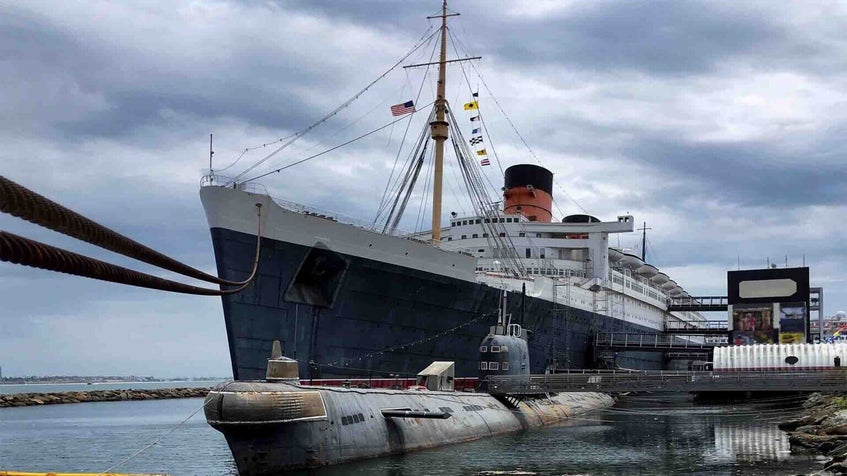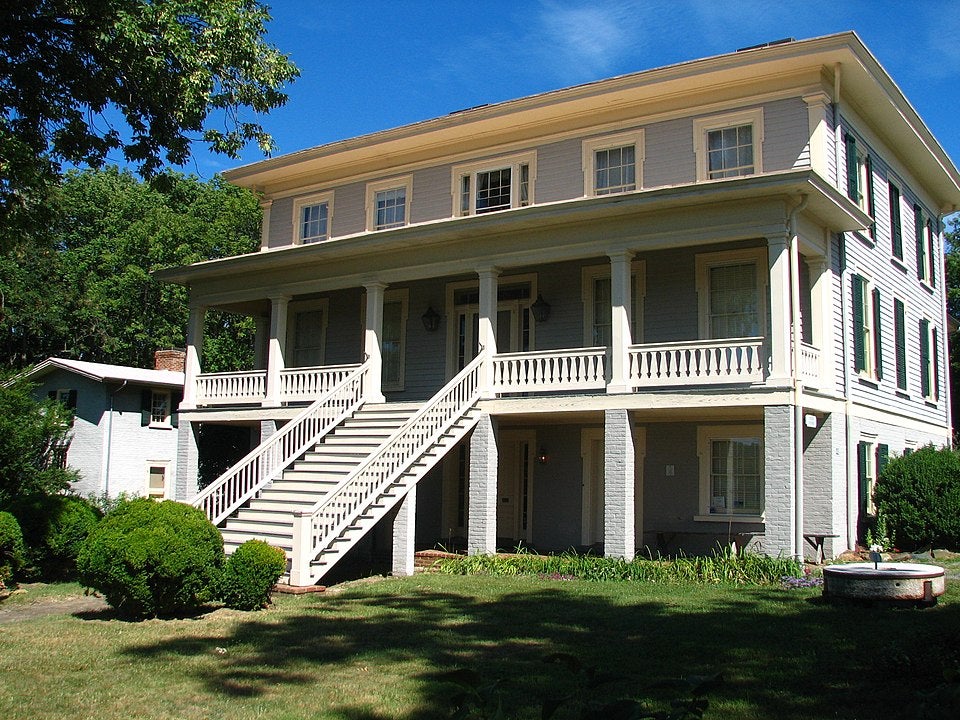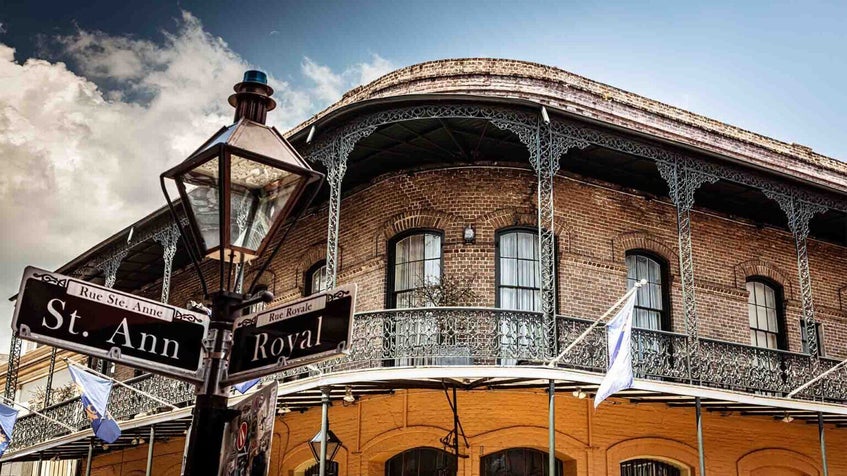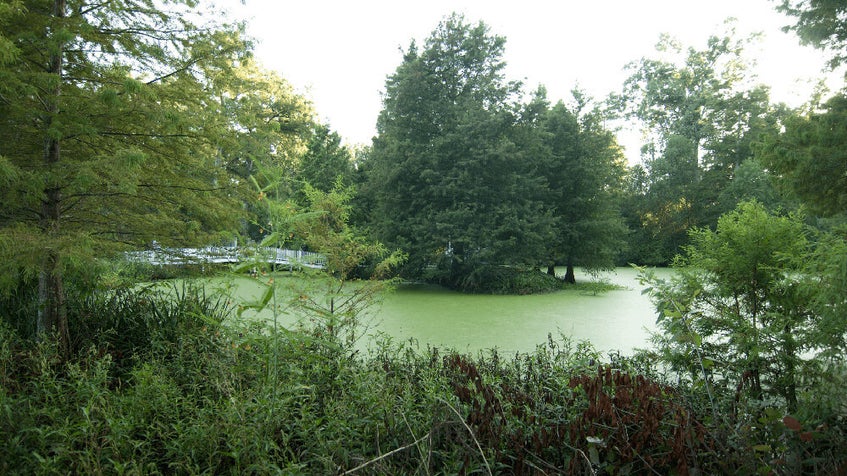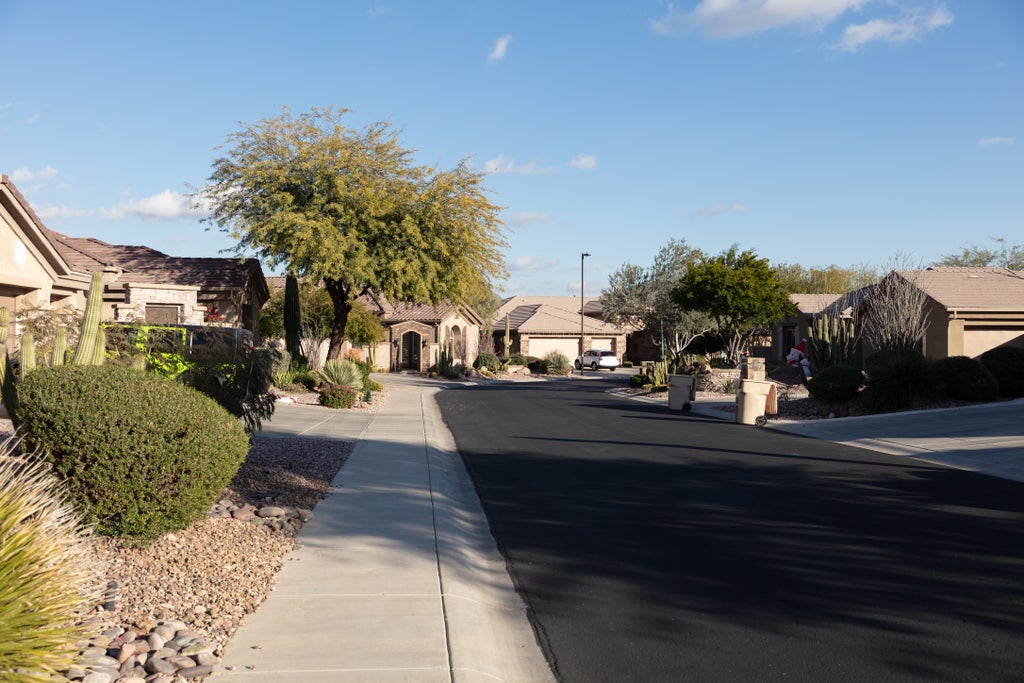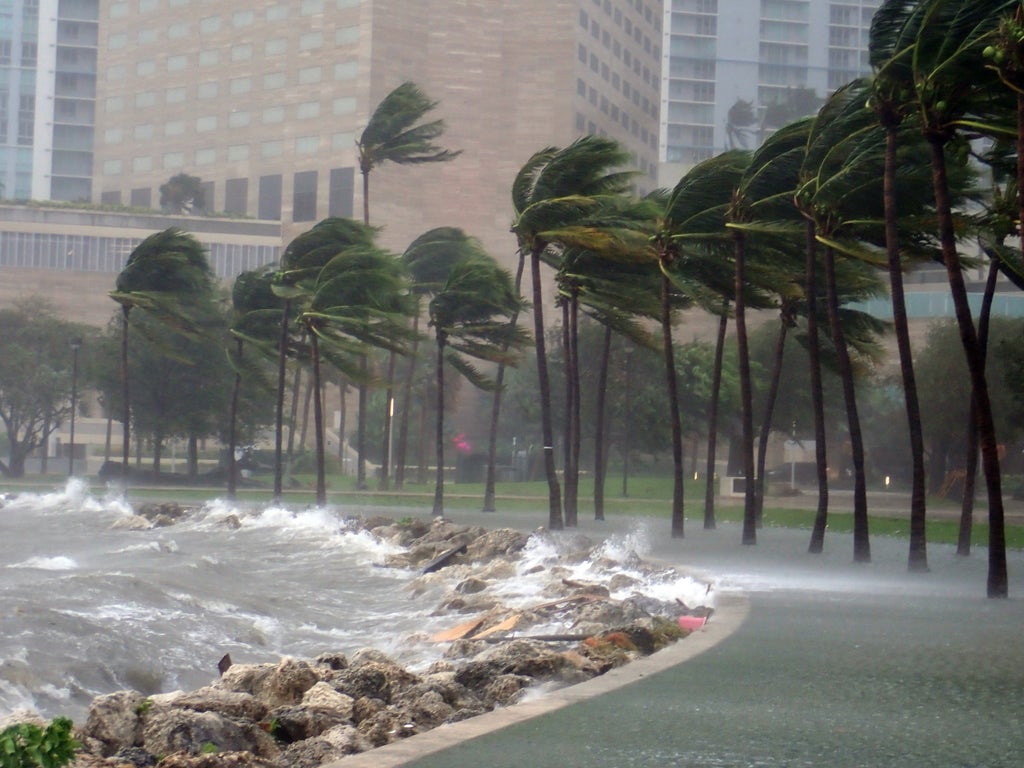
There are many things that must be disclosed when buying or selling a home. While this list includes numerous items, revealing whether a building qualifies as haunted is not required. Unless, of course, a homeowner has publicly made that claim.
The Cotality content team explores abandoned mansions, luxurious hotels, and famous cinematic locales that are haunted sites in America associated with paranormal activity and general creepiness. Some places are scary looking while others are haunted homes that have repeatedly been some of the scariest homes for sale in the country, but they are all cultural touchstones in one way or another.
Everyone has their opinion on places that creep them out, but here’s our take on locations and buildings that could (or should) be haunted places in the U.S.
1. The Queen Mary
Long Beach, California
When one of the world’s most luxurious ocean liners was converted into a hotel, its transformation was superficial. Even decades later, the spirit of the Queen Mary remains connected to its history.
With 200 original first-class staterooms and suites interspersed among the 80,000 square feet of salons designed in Art Deco splendor, the Queen Mary is as majestic today as it was on its maiden voyage in 1936. However, amid its sumptuous surroundings lurk the spirits of years gone by. With a reported 49 people deceased aboard — the ship was pressed into military service during World War II — there have been ample ghost stories in the decades since its decommission.
Although the floating hotel is known to be one of the most haunted in the nation, not all rooms are created equal. Stateroom B340 is one of the spookiest. For years it was closed to guests, but today the room is open and available for those looking for a unique experience. While there, make sure to pass by the Mauretania Room, the Mayfair Room, and the first-class swimming pool for a chance to commune with the other side.
2. Texas Chainsaw Massacre
Kingsland, Texas
The unassuming white farmhouse near Kingsland, Texas, is infamous for being the original setting of the 1974 horror classic, The Texas Chainsaw Massacre. While the gruesome events depicted in the film were fictionalized, they were loosely inspired by the real-life murders committed by serial killer Ed Gein.
The Victorian-style architecture is approximately 1,800 square feet and is the genuine article from the film, relocated 60 miles from its original setting in Round Rock, Texas. Fans of the film can walk the floors and hallways that served as the stage for Leather face and his cannibalistic family.
The house itself has been dismantled, moved, and meticulously restored, but its dark legacy lingers. It now serves as a restaurant called Hoopers, named after director Tobe Hooper, allowing visitors to dine inside the walls where fictional terror was born.
3. Edgar Allan Poe House
Baltimore, Maryland
According to Cotality data, this national landmark near the center of the city is worth $55,200.
Master of the macabre Edgar Allan Poe lived in numerous East Coast cities in his 40 short years, but the tale ultimately ended in Baltimore in October 1849, under fittingly mysterious circumstances.
Before his untimely demise, Poe spent time during the 1830s living in a West Baltimore home on N. Amity Street. Now a National Historic Landmark, the small brick home is just one the many places in the city associated with the legendary writer (including a pub in the Fells Point neighborhood, reportedly one of the last spots Poe was seen alive.)
Poe’s final resting place, on the grounds of Baltimore’s Gothic Westminster Hall, is located less than a mile from the historic home where he likely penned some of his legendary work. For years, an unknown visitor (or perhaps multiple visitors) known as the “Poe Toaster” left roses, notes and liquor bottles at Poe’s grave on his January birthday, a tradition that has since reportedly ended and remains as eerie as the author and his work.
4. Thackery Binx’s House
Salem, Massachusetts
The collection of small, timber-framed houses in Salem, Massachusetts, is famous for being the original setting for the 1693 opening scene of the 1993 film, Hocus Pocus. This is where the story of Thackery Binx began, showing the town where his little sister, Emily, was taken by the infamous Sanderson Sisters before he was cursed to be a black cat.
The village itself is a real place called Pioneer Village. It was built in 1930, and its old, isolated look was perfect for bringing the movie's past to life. Unlike the Sanderson Sisters' house, which was just a Hollywood set, the village is a real place that shows what that time was truly like. (If you try to use Marshall & Swift on these; beware the replacement cost for a 1630s thatched roof is a nightmare.)
The architecture is set to look like a real 17th-century colonial village with simple wooden houses. Today, movie fans can visit this spot and walk the same dirt paths that Thackery Binx ran on, putting them right into the scene where the witch hunt started.
5. The Exchange Hotel
Gordonsville, Virginia
Built in 1860 in Gordonsville, Virginia, the Exchange Hotel was designed to be a grand stop for wealthy railroad passengers. The original structure is quite large, measuring 11,125 square feet. Its expansive size and layout, with a large, multi-story central structure, was necessary to accommodate dozens of hotel guests and all the amenities they required.
However, its moment of luxury was shattered by the Civil War. By 1862, its strategic location had turned it into the Gordonsville Receiving Hospital. Over 70,000 wounded or sick soldiers were treated here, and the grounds became a sprawling cemetery for over 700 men.
Today, the building operates as a museum as it's widely considered one of Virginia's most haunted locations. Guests frequently report intense paranormal activity: disembodied groans of the wounded, the fleeting presence of ghostly soldiers and nurses, and even the apparition of Anna, the former cook, still seen near the old kitchen.
6. Amityville Horror House
Amityville, New York
The terrifying legend of the Amityville Horror House starts with a murder at 112 Ocean Avenue in Amityville, New York.
On November 13, 1974, Ronald DeFeo Jr. killed six members of his own family as they slept. He later claimed he did it because of "voices from the house."
One year later, George and Kathy Lutz bought the 4,000 square foot, five-bedroom Dutch Colonial house. Knowing its history, they hoped to start fresh. Instead, they were driven out after just 28 days by alleged extreme paranormal activity that turned the house into a world-famous haunting.
The house is a private residence and is not open to the public for tours. The owners have changed the iconic windows and the address to try to keep visitors away, but the dark reputation of the Amityville house endures.
7. LaLaurie Mansion
New Orleans, Louisiana
It isn’t surprising that one of the most unnerving houses in the U.S. one of the country’s most famous haunted houses would be in New Orleans, long considered to be a haunted town.
What is surprising, though, is the agonizing history of this house that led to its acclaimed status. Located in the French Quarter, the multistory, neoclassical home originally belonged to Madame Delphine LaLauire, a wealthy socialite who was known for her lavish parties and later for her cruelty.
It wasn’t until 1834 that the dark history of the LaLaurie mansion was revealed when a slave set fire to the home, and those who came to quench the blaze uncovered the horrific living conditions of some of its residents, many of whom are said to still haunt the mansion nearly 200 years later.
Both real history and the surrounding folklore that has been built around this home over the centuries make the LaLaurie Mansion one of the top creepy places in New Orleans.
8. The Crellin Family Estate
Redwood Valley, California
The Queen Anne Victorian-style manor in Redwood Valley, California is infamous for being the original exterior of the Crellin family home in the 2018 HBO miniseries, Sharp Objects.
The house is located on a huge 1,745-acre property called East Ranch in Northern California, not the Southern U.S. like in the show. Its exterior gave the perfect grand, isolated look for the Crellin's dark story.
The crew could only film the outside, but its gloomy, powerful appearance was all the HBO series needed to set the scary mood. While the fictional town of Wind Gap, Missouri, and the horrific events within the walls were derived from the novel by Gillian Flynn, the house became the haunting symbol of the Crellin family's dark secrets.
9. The Conjuring
Harrisville, Rhode Island
The Harrisville, Rhode Island, farmhouse is famous for being the original setting of the 2013 horror film, The Conjuring. Although the terrifying events were made more dramatic for the movie, they were based on the true experiences of the Perron family and investigators Ed and Lorraine Warren in the early 1970s.
The actual 18th-century structure is the genuine building used in the film. This remote, large farmhouse sits on a wooded property at 3,023 square feet. The house is still standing in its original location, but it has had several owners since the Perrons moved out.
Its dark reputation has made it a destination for paranormal enthusiasts, drawing investigators and brave visitors who want to explore its history. The current owners now host tours and overnight paranormal investigations.
10. Myrtles Plantation
St. Francisville, Louisiana
The dubious honor of the South’s spookiest house was long ago bestowed on the Myrtles Plantation, which was originally known as Laurel Grove.
Although imbued with ample southern charm, the facade cannot mask the eerie happenings at this plantation. Built in 1796 by the exiled General David Bradford, the 600-acre estate is well known for a roster of hauntings, with stories ranging from the macabre to the fantastical. Phantoms of generations past are said to walk the plantation’s halls, keeping guests company and adding a certain mystique to the atmosphere of this home that seems frozen in time and unable to let go of its past.
11. Sanders House
Los Angeles, California
According to Cotality data, this storied city landmark has a current total home value of $377,112.
Michael Jackson’s 1982 “Thriller” remains the best-selling album of all time, and a house in Los Angeles’s Angelino Heights neighborhood, the setting for the video of the same name, played a key role in its popularity.
Just a short jaunt from downtown Los Angeles, Carroll Avenue is lined with historic Victorian homes that feel somewhat eerily out of place in sunny Southern California. The video, which features a spoken-word cameo from the late, legendary Vincent Price, helped turn Jackson’s sixth solo album into a cultural juggernaut that has sold 70 million copies to date.
The 3,500-plus-square-foot home, officially known as the Sanders House, was reportedly built in the 1870s and was dedicated as a Los Angeles city landmark about a century later.
12. Stanley Hotel
Estes Park, Colorado
Stanley Kubrick’s classic 1980 horror film “The Shining” (based on Stephen King’s novel of the same name) has spooked decades of cinephiles, but it has also propelled millions of people to visit the sprawling, red-roofed Stanley Hotel, just outside of Colorado’s Rocky Mountain National Park.
Constructed in Estes Park in 1909, the Stanley Hotel inspired the King novel that became a cinematic sensation. As if that weren’t enough, the hotel is also the site of a considerable amount of paranormal activity. Among the 142 rooms of this colonial-revival hotel, the fourth floor is known to be particularly spirited.
13. Winchester Mystery House
San Jose, California
Doors that lead to nowhere, staircases that abruptly end and other unnerving architectural features are hallmarks of this iconic 60-room mansion located near the heart of Silicon Valley.
The 24,000-square-foot Winchester Mystery House was the brainchild of Sarah Winchester, an heiress to the firearms manufacturer of the same name. Winchester began building the home in the 1880s, and construction continued until her death more than 30 years later.
Much speculation surrounds the house’s lengthy construction period and bizarre features; one anecdote goes that a psychic consulted Winchester to build the house, while another maintains that ghosts instructed her to continue building the home as restitution for those killed by her family’s namesake guns.









